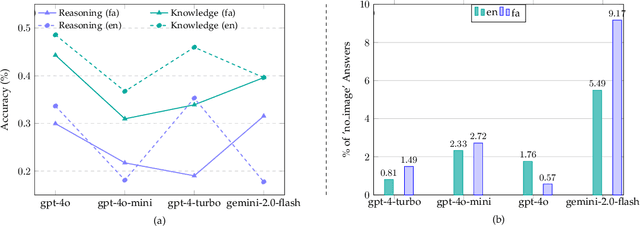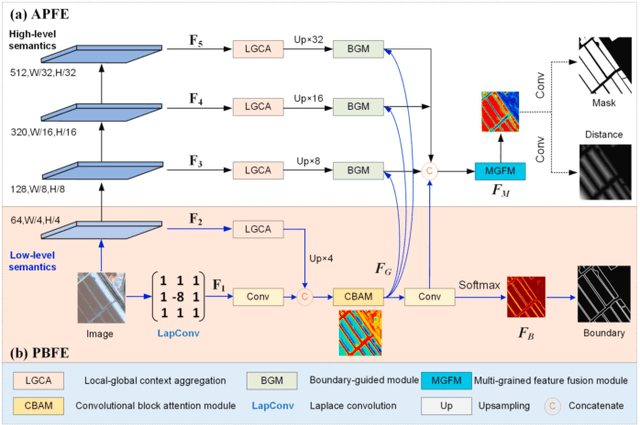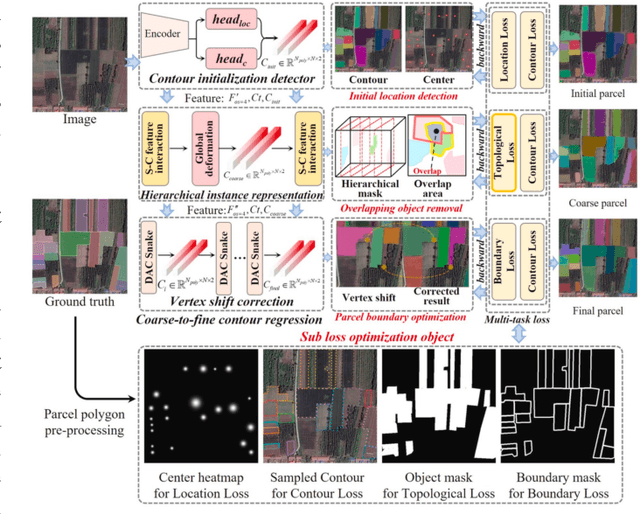Topic
Papers and Code
Introduction to Regularization and Learning Methods for Inverse Problems
Aug 25, 2025These lecture notes evolve around mathematical concepts arising in inverse problems. We start by introducing inverse problems through examples such as differentiation, deconvolution, computed tomography and phase retrieval. This then leads us to the framework of well-posedness and first considerations regarding reconstruction and inversion approaches. The second chapter then first deals with classical regularization theory of inverse problems in Hilbert spaces. After introducing the pseudo-inverse, we review the concept of convergent regularization. Within this chapter we then proceed to ask the question of how to realize practical reconstruction algorithms. Here, we mainly focus on Tikhonov and sparsity promoting regularization in finite dimensional spaces. In the third chapter, we dive into modern deep-learning methods, which allow solving inverse problems in a data-dependent approach. The intersection between inverse problems and machine learning is a rapidly growing field and our exposition here restricts itself to a very limited selection of topics. Among them are learned regularization, fully-learned Bayesian estimation, post-processing strategies and plug-n-play methods.
Why Synthetic Isn't Real Yet: A Diagnostic Framework for Contact Center Dialogue Generation
Aug 25, 2025Synthetic transcript generation is critical in contact center domains, where privacy and data scarcity limit model training and evaluation. Unlike prior synthetic dialogue generation work on open-domain or medical dialogues, contact center conversations are goal-oriented, role-asymmetric, and behaviorally complex, featuring disfluencies, ASR noise, and compliance-driven agent actions. In deployments where transcripts are unavailable, standard pipelines still yield derived call attributes such as Intent Summaries, Topic Flow, and QA Evaluation Forms. We leverage these as supervision signals to guide generation. To assess the quality of such outputs, we introduce a diagnostic framework of 18 linguistically and behaviorally grounded metrics for comparing real and synthetic transcripts. We benchmark four language-agnostic generation strategies, from simple prompting to characteristic-aware multi-stage approaches, alongside reference-free baselines. Results reveal persistent challenges: no method excels across all traits, with notable deficits in disfluency, sentiment, and behavioral realism. Our diagnostic tool exposes these gaps, enabling fine-grained evaluation and stress testing of synthetic dialogue across languages.
F2RVLM: Boosting Fine-grained Fragment Retrieval for Multi-Modal Long-form Dialogue with Vision Language Model
Aug 25, 2025Traditional dialogue retrieval aims to select the most appropriate utterance or image from recent dialogue history. However, they often fail to meet users' actual needs for revisiting semantically coherent content scattered across long-form conversations. To fill this gap, we define the Fine-grained Fragment Retrieval (FFR) task, requiring models to locate query-relevant fragments, comprising both utterances and images, from multimodal long-form dialogues. As a foundation for FFR, we construct MLDR, the longest-turn multimodal dialogue retrieval dataset to date, averaging 25.45 turns per dialogue, with each naturally spanning three distinct topics. To evaluate generalization in real-world scenarios, we curate and annotate a WeChat-based test set comprising real-world multimodal dialogues with an average of 75.38 turns. Building on these resources, we explore existing generation-based Vision-Language Models (VLMs) on FFR and observe that they often retrieve incoherent utterance-image fragments. While optimized for generating responses from visual-textual inputs, these models lack explicit supervision to ensure semantic coherence within retrieved fragments. To this end, we propose F2RVLM, a generative retrieval model trained in a two-stage paradigm: (1) supervised fine-tuning to inject fragment-level retrieval knowledge, and (2) GRPO-based reinforcement learning with multi-objective rewards promoting semantic precision, relevance, and contextual coherence. To handle varying intra-fragment complexity, from locally dense to sparsely distributed, we introduce difficulty-aware curriculum sampling that ranks training instances by model-predicted difficulty and gradually exposes the model to harder samples. This boosts reasoning ability in long, multi-turn contexts. F2RVLM outperforms popular VLMs in both in-domain and real-domain settings, demonstrating superior retrieval performance.
MEENA (PersianMMMU): Multimodal-Multilingual Educational Exams for N-level Assessment
Aug 24, 2025



Recent advancements in large vision-language models (VLMs) have primarily focused on English, with limited attention given to other languages. To address this gap, we introduce MEENA (also known as PersianMMMU), the first dataset designed to evaluate Persian VLMs across scientific, reasoning, and human-level understanding tasks. Our dataset comprises approximately 7,500 Persian and 3,000 English questions, covering a wide range of topics such as reasoning, mathematics, physics, diagrams, charts, and Persian art and literature. Key features of MEENA include: (1) diverse subject coverage spanning various educational levels, from primary to upper secondary school, (2) rich metadata, including difficulty levels and descriptive answers, (3) original Persian data that preserves cultural nuances, (4) a bilingual structure to assess cross-linguistic performance, and (5) a series of diverse experiments assessing various capabilities, including overall performance, the model's ability to attend to images, and its tendency to generate hallucinations. We hope this benchmark contributes to enhancing VLM capabilities beyond English.
Agentic AI for Software: thoughts from Software Engineering community
Aug 24, 2025AI agents have recently shown significant promise in software engineering. Much public attention has been transfixed on the topic of code generation from Large Language Models (LLMs) via a prompt. However, software engineering is much more than programming, and AI agents go far beyond instructions given by a prompt. At the code level, common software tasks include code generation, testing, and program repair. Design level software tasks may include architecture exploration, requirements understanding, and requirements enforcement at the code level. Each of these software tasks involves micro-decisions which can be taken autonomously by an AI agent, aided by program analysis tools. This creates the vision of an AI software engineer, where the AI agent can be seen as a member of a development team. Conceptually, the key to successfully developing trustworthy agentic AI-based software workflows will be to resolve the core difficulty in software engineering - the deciphering and clarification of developer intent. Specification inference, or deciphering the intent, thus lies at the heart of many software tasks, including software maintenance and program repair. A successful deployment of agentic technology into software engineering would involve making conceptual progress in such intent inference via agents. Trusting the AI agent becomes a key aspect, as software engineering becomes more automated. Higher automation also leads to higher volume of code being automatically generated, and then integrated into code-bases. Thus to deal with this explosion, an emerging direction is AI-based verification and validation (V & V) of AI generated code. We posit that agentic software workflows in future will include such AIbased V&V.
Decoding Alignment: A Critical Survey of LLM Development Initiatives through Value-setting and Data-centric Lens
Aug 23, 2025AI Alignment, primarily in the form of Reinforcement Learning from Human Feedback (RLHF), has been a cornerstone of the post-training phase in developing Large Language Models (LLMs). It has also been a popular research topic across various disciplines beyond Computer Science, including Philosophy and Law, among others, highlighting the socio-technical challenges involved. Nonetheless, except for the computational techniques related to alignment, there has been limited focus on the broader picture: the scope of these processes, which primarily rely on the selected objectives (values), and the data collected and used to imprint such objectives into the models. This work aims to reveal how alignment is understood and applied in practice from a value-setting and data-centric perspective. For this purpose, we investigate and survey (`audit') publicly available documentation released by 6 LLM development initiatives by 5 leading organizations shaping this technology, focusing on proprietary (OpenAI's GPT, Anthropic's Claude, Google's Gemini) and open-weight (Meta's Llama, Google's Gemma, and Alibaba's Qwen) initiatives, all published in the last 3 years. The findings are documented in detail per initiative, while there is also an overall summary concerning different aspects, mainly from a value-setting and data-centric perspective. On the basis of our findings, we discuss a series of broader related concerns.
Snap-Snap: Taking Two Images to Reconstruct 3D Human Gaussians in Milliseconds
Aug 20, 2025Reconstructing 3D human bodies from sparse views has been an appealing topic, which is crucial to broader the related applications. In this paper, we propose a quite challenging but valuable task to reconstruct the human body from only two images, i.e., the front and back view, which can largely lower the barrier for users to create their own 3D digital humans. The main challenges lie in the difficulty of building 3D consistency and recovering missing information from the highly sparse input. We redesign a geometry reconstruction model based on foundation reconstruction models to predict consistent point clouds even input images have scarce overlaps with extensive human data training. Furthermore, an enhancement algorithm is applied to supplement the missing color information, and then the complete human point clouds with colors can be obtained, which are directly transformed into 3D Gaussians for better rendering quality. Experiments show that our method can reconstruct the entire human in 190 ms on a single NVIDIA RTX 4090, with two images at a resolution of 1024x1024, demonstrating state-of-the-art performance on the THuman2.0 and cross-domain datasets. Additionally, our method can complete human reconstruction even with images captured by low-cost mobile devices, reducing the requirements for data collection. Demos and code are available at https://hustvl.github.io/Snap-Snap/.
A Comprehensive Review of Agricultural Parcel and Boundary Delineation from Remote Sensing Images: Recent Progress and Future Perspectives
Aug 20, 2025



Powered by advances in multiple remote sensing sensors, the production of high spatial resolution images provides great potential to achieve cost-efficient and high-accuracy agricultural inventory and analysis in an automated way. Lots of studies that aim at providing an inventory of the level of each agricultural parcel have generated many methods for Agricultural Parcel and Boundary Delineation (APBD). This review covers APBD methods for detecting and delineating agricultural parcels and systematically reviews the past and present of APBD-related research applied to remote sensing images. With the goal to provide a clear knowledge map of existing APBD efforts, we conduct a comprehensive review of recent APBD papers to build a meta-data analysis, including the algorithm, the study site, the crop type, the sensor type, the evaluation method, etc. We categorize the methods into three classes: (1) traditional image processing methods (including pixel-based, edge-based and region-based); (2) traditional machine learning methods (such as random forest, decision tree); and (3) deep learning-based methods. With deep learning-oriented approaches contributing to a majority, we further discuss deep learning-based methods like semantic segmentation-based, object detection-based and Transformer-based methods. In addition, we discuss five APBD-related issues to further comprehend the APBD domain using remote sensing data, such as multi-sensor data in APBD task, comparisons between single-task learning and multi-task learning in the APBD domain, comparisons among different algorithms and different APBD tasks, etc. Finally, this review proposes some APBD-related applications and a few exciting prospects and potential hot topics in future APBD research. We hope this review help researchers who involved in APBD domain to keep track of its development and tendency.
Temporal and Rotational Calibration for Event-Centric Multi-Sensor Systems
Aug 18, 2025Event cameras generate asynchronous signals in response to pixel-level brightness changes, offering a sensing paradigm with theoretically microsecond-scale latency that can significantly enhance the performance of multi-sensor systems. Extrinsic calibration is a critical prerequisite for effective sensor fusion; however, the configuration that involves event cameras remains an understudied topic. In this paper, we propose a motion-based temporal and rotational calibration framework tailored for event-centric multi-sensor systems, eliminating the need for dedicated calibration targets. Our method uses as input the rotational motion estimates obtained from event cameras and other heterogeneous sensors, respectively. Different from conventional approaches that rely on event-to-frame conversion, our method efficiently estimates angular velocity from normal flow observations, which are derived from the spatio-temporal profile of event data. The overall calibration pipeline adopts a two-step approach: it first initializes the temporal offset and rotational extrinsics by exploiting kinematic correlations in the spirit of Canonical Correlation Analysis (CCA), and then refines both temporal and rotational parameters through a joint non-linear optimization using a continuous-time parametrization in SO(3). Extensive evaluations on both publicly available and self-collected datasets validate that the proposed method achieves calibration accuracy comparable to target-based methods, while exhibiting superior stability over purely CCA-based methods, and highlighting its precision, robustness and flexibility. To facilitate future research, our implementation will be made open-source. Code: https://github.com/NAIL-HNU/EvMultiCalib.
Arabic Multimodal Machine Learning: Datasets, Applications, Approaches, and Challenges
Aug 17, 2025Multimodal Machine Learning (MML) aims to integrate and analyze information from diverse modalities, such as text, audio, and visuals, enabling machines to address complex tasks like sentiment analysis, emotion recognition, and multimedia retrieval. Recently, Arabic MML has reached a certain level of maturity in its foundational development, making it time to conduct a comprehensive survey. This paper explores Arabic MML by categorizing efforts through a novel taxonomy and analyzing existing research. Our taxonomy organizes these efforts into four key topics: datasets, applications, approaches, and challenges. By providing a structured overview, this survey offers insights into the current state of Arabic MML, highlighting areas that have not been investigated and critical research gaps. Researchers will be empowered to build upon the identified opportunities and address challenges to advance the field.
 Add to Chrome
Add to Chrome Add to Firefox
Add to Firefox Add to Edge
Add to Edge